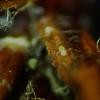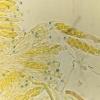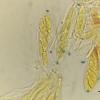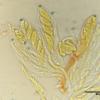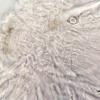
21-12-2025 09:32
Hello.A tiny ascomycete found embedded in wood in

21-12-2025 21:32
Pol DebaenstHello, Garden, Burgweg 19, Veurne, BelgiumOn 10/1

22-12-2025 23:38
Patrice TANCHAUDBonsoir, récolte sur un mur en pierre, apothéci

22-12-2025 00:47
Patrice TANCHAUDBonsoir, récolte à proximité du milieu dunaire

21-12-2025 21:40
Isabelle CharissouBonjour, j'aimerais connaitre les références de

20-12-2025 23:08
Patrice TANCHAUDBonsoir, récolte sur sol sablonneux dans l'arri�

20-12-2025 15:47
Mirek GrycHi.These grew on pine wood that was heavily covere
Bryoscyphus turbinatus-like on Polytrichum
Georges Greiff,
25-06-2022 22:39
Hi all,
Since I do not have Velenovsky (1934), I would like to get any opinions on this Helotiales sp. found on the lower, dying leaves of Polytrichum commune. Is it one of those featured in that book? To me, it seems to resemble "Bryoscyphus" turbinatus but is smaller in most respects.
Apothecia 60-130 diam, around 40 tall, whitish when wet, yellowish when dry, with a short darker stipe. Excipulum comprising rounded cells of about 7 x 5, smaller near stipe. At margins, short hairs develop up to about 25 long x 3.5-4 wide.
Asci 8-spored, apical apparatus staining blue in IKI. Croziers + (?). Paraphyses narrowly clavate, perhaps minutely verrucose (cannot assess VBs as dead). Ascospores broadly fusoid, hyaline, about 10-12 x 2.5-3.5 (probably a bit bigger when fresh).
Thanks,
George
Hans-Otto Baral,
26-06-2022 18:09

Re : Bryoscyphus turbinatus-like on Polytrichum
You have it only dry? The ascospores should be shown in ater with their contents, best when still alive. Also the paraphysis contents in water.
The asci seemed to me without croziers but it is not clear.
Georges Greiff,
26-06-2022 18:19
Re : Bryoscyphus turbinatus-like on Polytrichum
Hi Zotto,
Unfortunately, the specimen is 4 years old from a herbarium specimen of the moss, so I can only observe dead material - not overly useful for this group. I will keep an eye out for fresh specimens in future fieldwork.
Best wishes,
George
Unfortunately, the specimen is 4 years old from a herbarium specimen of the moss, so I can only observe dead material - not overly useful for this group. I will keep an eye out for fresh specimens in future fieldwork.
Best wishes,
George

